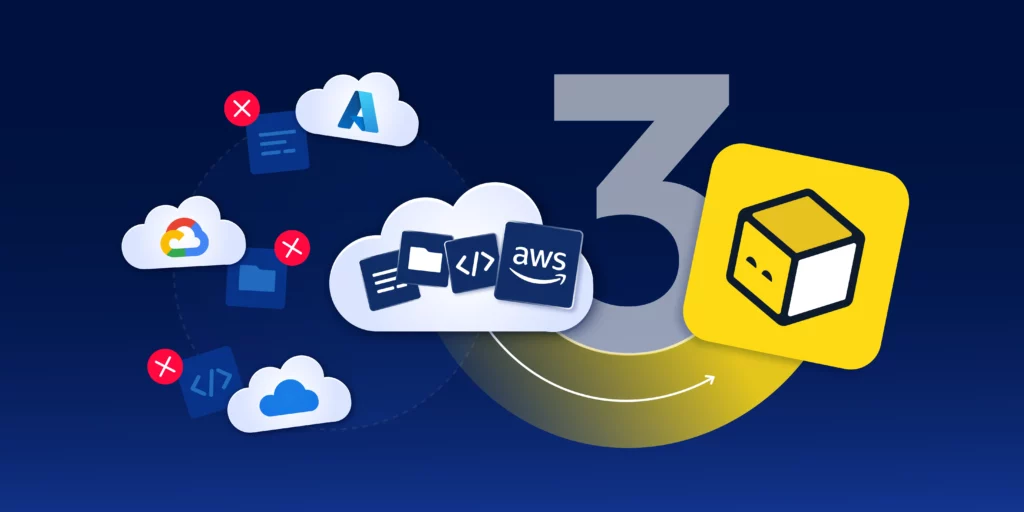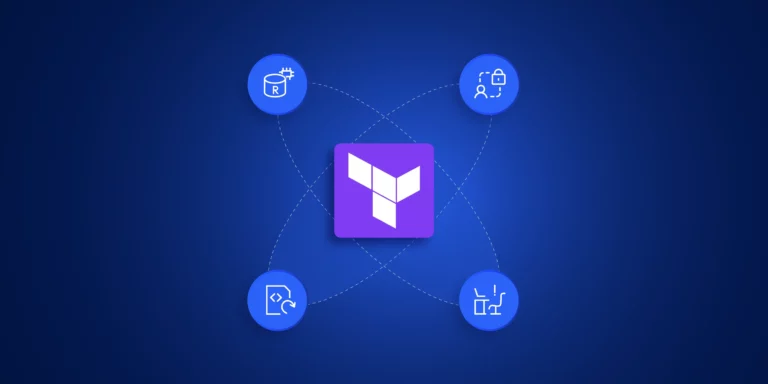Managing infrastructure as code (IaC) across multiple cloud providers is complex. That’s why many teams are exploring OpenTofu Multi-Cloud setups to simplify configuration, reduce drift, and improve repeatability across AWS, Azure, and GCP. This is where OpenTofu comes into play. OpenTofu is a fork of Terraform with a strong focus on open governance. It streamlines multi-cloud IaC by providing a unified syntax, reliable state management, and modular abstraction.
With that in mind, let’s explore three common challenges of multi-cloud IaC and how OpenTofu helps solve them.
Challenge #1: Multi-Cloud Resource Inconsistencies in IaC
Each cloud provider (AWS, Azure, GCP, etc.) uses its own resource naming conventions, attribute names, and configuration structures. This leads to:
- Duplicate effort: Your DevOps team would have to write separate IaC code for each provider, even when the underlying functionality is the same (e.g., spinning up a VM or configuring a storage bucket).
- Typos and misconfigurations: Switching between AWS and Azure resource blocks can introduce simple mistakes, such as using instance_type in one provider block and size in another, depending on the provider configurations.
- Steep learning curve: our DevOps team needs to memorize provider-specific attributes, which can slow down onboarding and even increase the chance of errors.
🟨 How OpenTofu Solves Multi-Cloud Resource Conflicts
Consistent HCL syntax: OpenTofu uses OpenTofu Configuration Language. With this scripting language, your infrastructure definitions remain the same on a high level. For instance, You always write:
|
1 2 3 |
resource "<PROVIDER>_<RESOURCE_TYPE>" "<NAME>" { # provider-specific attributes here } |
Doing so helps reduce cognitive load when switching between AWS, Azure, and GCP.
- Interpolation and expressions: OpenTofu leverages the same interpolation syntax (e.g., var, local, length(), lookup()). With this, you can write generic logic to handle differences—like choosing the right AMI ID or machine image—based on a single variable or map, rather than hardcoding cloud-specific details.
Challenge #2: Managing Multi-Cloud State Files and Environments
In a multi-cloud environment, each provider might require its own state file. So, if you aren’t careful, you can end up with:
- State sprawl: Dozens of local or remote state files, each tied to different accounts, regions, or environments. Keeping track of which state belongs to which deployment becomes a headache.
- Drift and conflicts: Without isolation, concurrent teams may accidentally overwrite each other’s state files, leading to resource drift or plan/apply failures.
- Environment confusion: It’s easy to apply changes to the wrong environment (e.g., staging vs. production) if the state is not properly isolated.
🟨 OpenTofu State Management for Multi-Cloud Infrastructure
Remote backends: OpenTofu supports remote backends, which let you store your state in a remote location, thus ensuring effective collaboration.
It supports backend types like S3, Azure Blob, and GCS.
By centralizing the state in a remote backend, you get:
- Versioned state history (rollbacks, audits)
- Team-wide locking (avoid simultaneous writes)
- Encryption at rest and in transit for security
State isolation per provider: Using different backend blocks, you can configure multiple backends within a single project directory. For example:
|
1 2 3 4 5 6 7 8 9 10 11 |
backend "s3" { bucket = "my-aws-state" key = "aws.${opentofu.workspace}.tfstate" region = "us-west-2" } backend "azurerm" { storage_account_name = "my-azure-state" container_name = "tfstate" key = "azure.${opentofu.workspace}.tfstate" } |
This makes it easy to keep AWS and Azure states in their respective storage services while maintaining a clear naming convention.
Challenge #3: Modular Reuse in Multi-Cloud IaC with OpenTofu
Reusing code through modules is a good approach to avoid duplication. However, when you’re trying to build generic multi-cloud modules, you run into issues like:
- Provider-specific settings: A load balancer in AWS (aws_lb) has different arguments than an Azure load balancer (azurerm_lb), making it hard to write a single module that works for both.
- Conditional logic complexity: Embedding if-else statements or count checks for provider-specific attributes can clutter module code.
- Testing and validation: Verifying that a module works for all supported providers requires multiple test configurations, increasing maintenance overhead.
🟨 Building Cross-Cloud Modules Using OpenTofu
Module inputs and maps: You can pass a map of provider-specific arguments into a module and use conditionals inside the module to select the correct resource. For example:
|
1 2 3 4 5 6 7 8 9 10 11 12 13 14 15 16 17 18 19 20 |
module "compute" { source = "./modules/compute" provider = var.cloud_config["provider"] config = var.cloud_config } You can define your module to function as follows: resource "aws_instance" "vm" { count = var.config["provider"] == "aws" ? 1 : 0 ami = var.config["ami"] instance_type = var.config["instance_type"] # ... } resource "azurerm_virtual_machine" "vm" { count = var.config["provider"] == "azurerm" ? 1 : 0 name = var.config["name"] location = var.config["location"] resource_group_name = var.config["resource_group"] # ... } |
Accordingly, you can define modules that provision a multi-cloud environment based on your inputs. Doing so creates abstraction for the consumer as they don’t need to know the complexity behind the scenes, thus providing a unified API to provision multi-cloud infrastructure.
OpenTofu for Multi-Cloud: Final Thoughts
Multi-cloud IaC can be challenging due to distinct resource definitions across cloud providers, fragmented state files, and the need for reusable modules across providers.
By using OpenTofu, it addresses these challenges by providing:
- Consistent OpenTofu syntax for all clouds, which reduces the learning curve.
- Robust state management with remote backends, workspaces, and provider-specific isolation.
- Modular abstraction using inputs, maps, and dynamic blocks, enabling one module to serve multiple providers.
By leveraging OpenTofu, teams can:
- Simplify their multi-cloud operations
- Reduce configuration drift
- Accelerate deployments.
In addition to this, consider using ControlMonkey to streamline your OpenTofu workflows. If you’re ready to streamline your infrastructure workflows and manage AWS, Azure, and GCP workloads, why not try ControlMonkey?
ControlMonkey seamlessly integrates with OpenTofu to help you maintain compliance, track drift, and automate policy enforcement—so you can focus on building, not debugging.

What we customers asking about OpenTofu and Multi-Cloud
OpenTofu is a community-driven fork of Terraform, offering near-identical syntax and workflow compatibility. The key difference is its open governance model, which gives enterprises more control and transparency. For multi-cloud use cases, OpenTofu provides the same HCL-based approach but with an ecosystem committed to long-term openness—making it ideal for teams who want Terraform-like functionality without vendor lock-in.
Yep. generative AI tools can assist with writing OpenTofu code, creating reusable modules, and automatically handling cloud-specific configurations. However, success depends on well-structured templates and guardrails. Tools like ControlMonkey can further enhance this by integrating GenAI with policy enforcement and drift detection for production-grade IaC automation.
Yes and Yes. OpenTofu’s consistent syntax, modular architecture, and support for multiple backends make it a strong fit for managing infrastructure across AWS, Azure, GCP, and more. It enables platform teams to abstract cloud-specific differences while maintaining a unified workflow – critical for scaling multi-cloud IaC operations.











